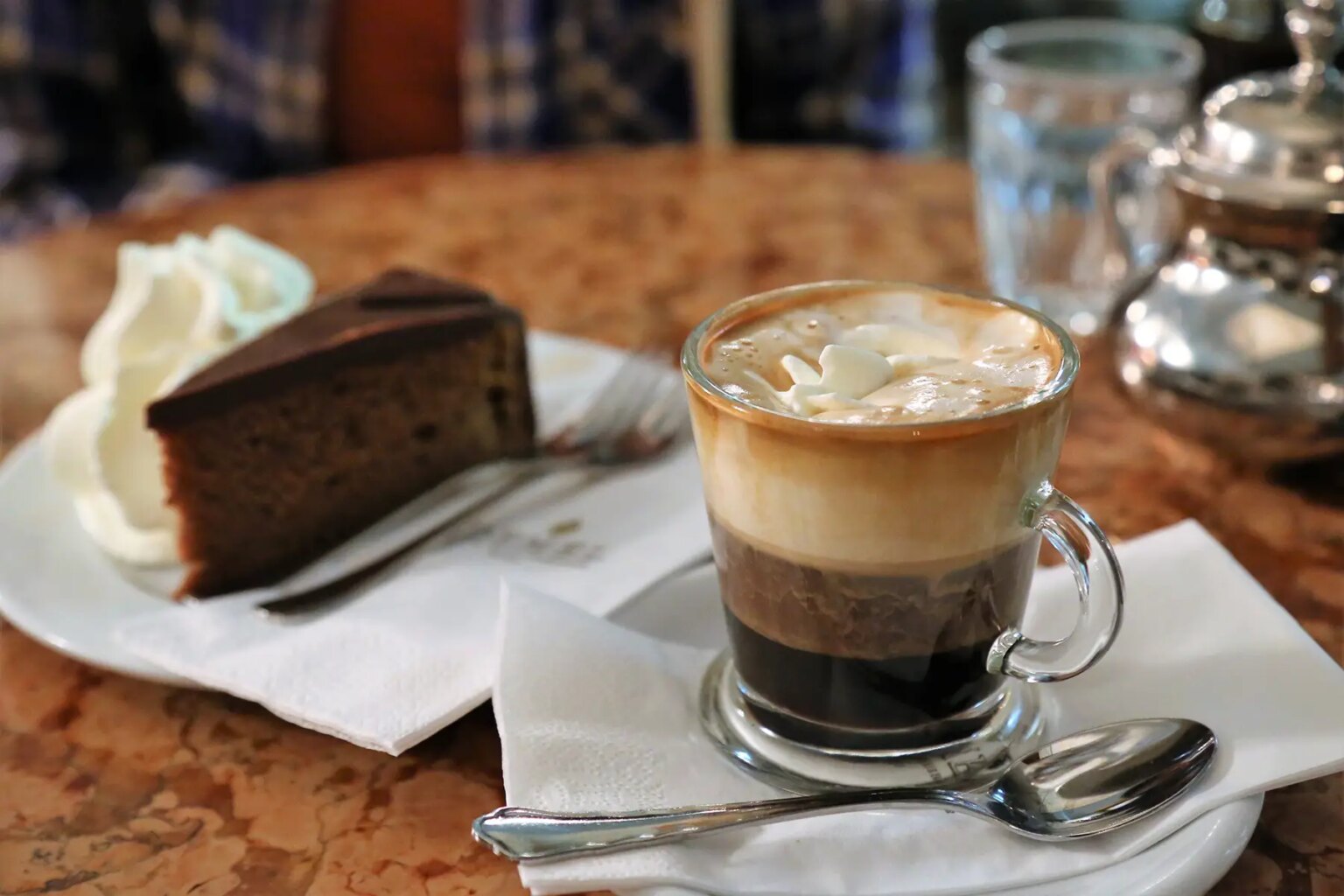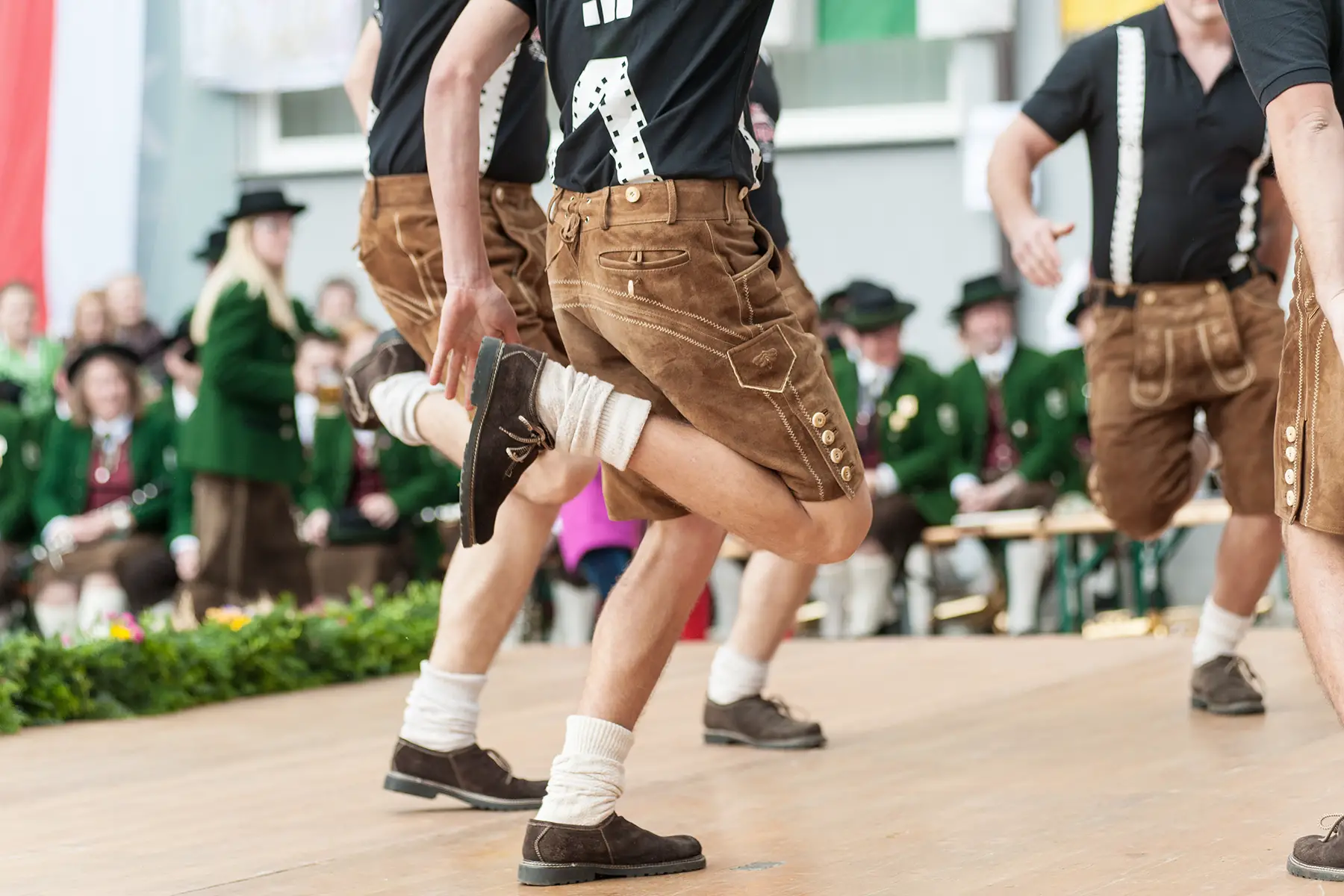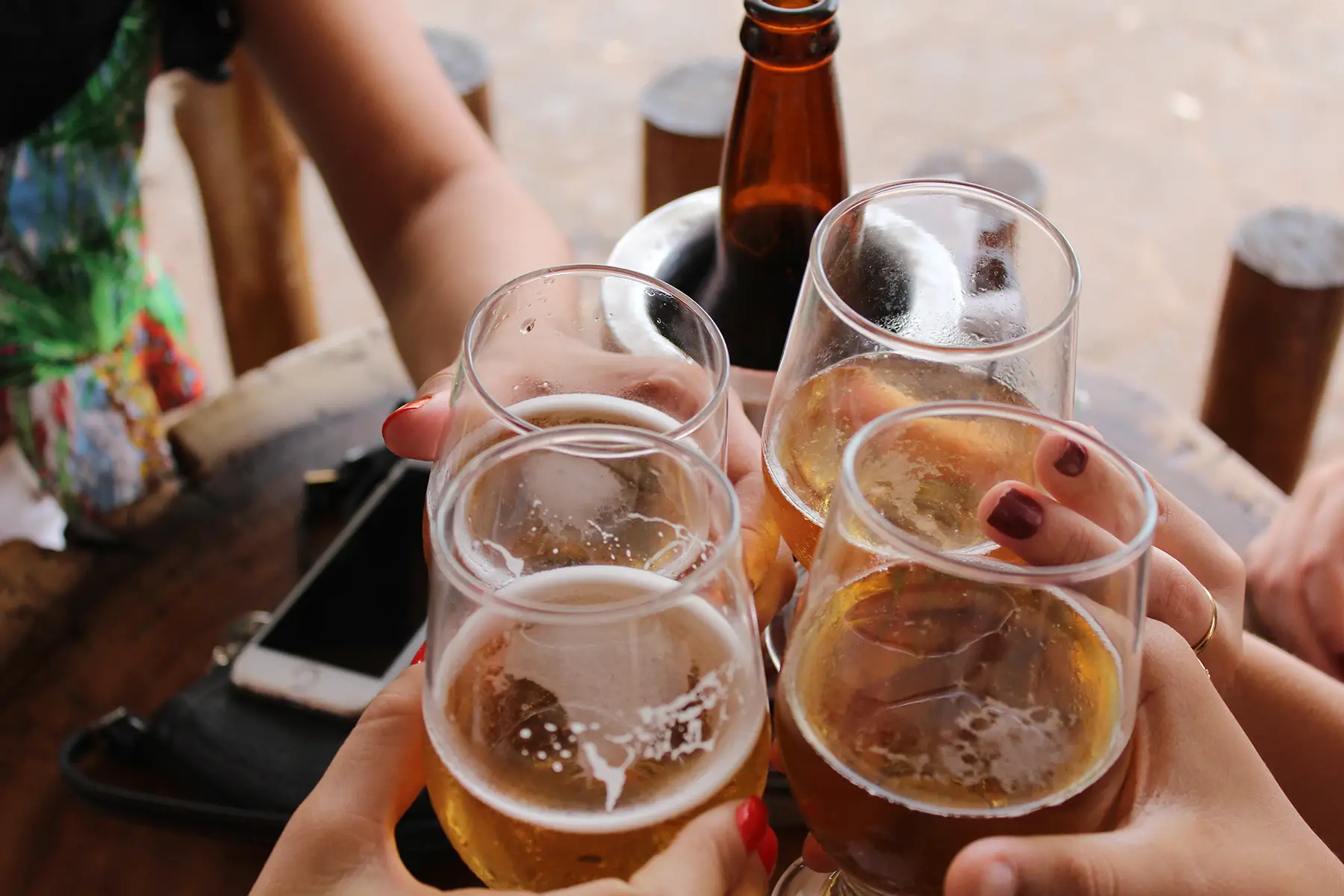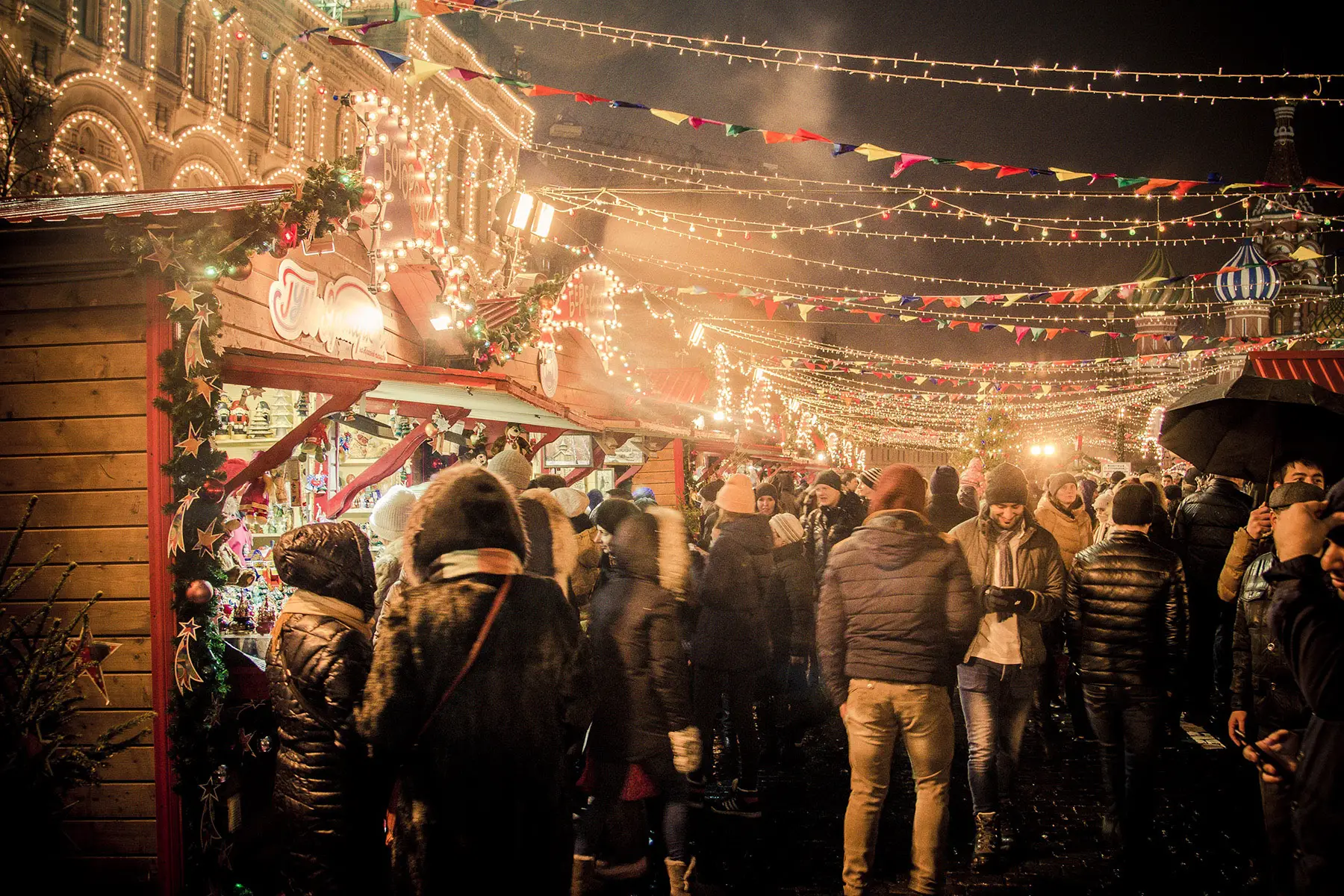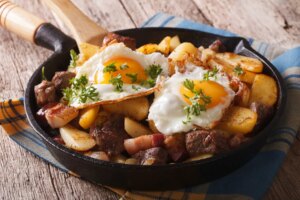Austria might not be as well known for its drinking culture as its heart-warming cuisine, but there is actually much to discover when it comes to drinking in the alpine country. Whether you’re an avid beer drinker, a budding sommelier, or a coffee addict on the search for a delicious caffeine kick, you certainly won’t have any trouble finding it in the Land of Mozart.
Get an idea of what delicious beverages are in store by reading the following sections:
Stiegl
Ready to get well-acquainted with all those great Austrian beers? Visit the webshop of popular Salzburg brewery Stiegl and discover a wide range of delicious Austrian beers you'll soon want to try. Invite your friends around and share your new favorite beers you found on the Stiegl webshop.
Hot drinks in Austria
Given Austria’s bitterly cold winters and stature as a world-class ski destination, it is hardly surprising that the country boasts an extensive menu of delicious hot drinks. Not only are these perfect for warming up during the chillier months, but they are also a delight to the taste buds. Just take a look at these mouth-watering hot drinks on offer across the country.
Coffee
Unlike in some other countries where people mainly drink coffee to kickstart their day, it serves a much greater purpose in Austria. In fact, sipping on a cup of hot java with friends is one of the most popular social activities people enjoy in the country. And Austrians enjoy this pastime any time of the day, not just for breakfast. In fact, café culture has been an integral part of Austrian life since the 17th century. This is particularly the case in Vienna, which is home to some of the oldest and most decadent coffeehouses (Kaffeehäuser) in Europe.

Amazingly, these grand cafés hold such cultural value that UNESCO has even granted them intangible cultural heritage status. Often decked out with marble tabletops, Thonet chairs, and elegant decor, these classic Kaffeehäuser are some of the most popular places to socialize in the city. They are also a coffee lover’s paradise, boasting an extensive menu of specialty coffees that arrive at the table beautifully presented. After all, what could be more exquisite than indulging in a classic Viennese Einspänner in the legendary Café Central?
Popular specialty coffees
If you are lucky enough to visit one of Austria’s grand coffeehouses, you might be a little overwhelmed by the selection of specialty coffees on offer. So to help you out, here are some of the most popular options you will likely come across on the menu:
- Viennese Einspänner: espresso topped with a hefty dollop of whipped cream
- Melange: an espresso served with half steamed milk in a large glass with milk froth on top
- Verlängerter (Café Americano): a small cup of espresso served with hot water on the side typically served with milk
- Kaffee Verkehrt (Latte Macchiato): which means ‘upside-down’ because it has more milk than coffee and comes in a high glass
- Mozart Café: a double espresso with a cap of whipped cream served with sherry brandy on the side
- Fiaker: which includes a shot of Austrian rum and whipped cream

If those all sound a bit too fancy, though, you can always stick with a Kleiner Brauner or Großer Brauner. This translates as “little brown one” or “large brown one” and is simply a single or double espresso shot; served with a small pot of coffee cream on the side.
A little something on the side
In Austria’s Kaffeehäuser, coffee is almost always served with a glass of water to help you clean your palate and stay hydrated. It might also arrive at your table with a small piece of chocolate on the side. And if you’re feeling a little peckish, you can always choose from an assortment of delicious cakes and desserts to go with your brew. After all, these cafés are often as famous for their sweet treats as they are for their specialty coffees. The iconic Sachertorte is perhaps the most famous dessert in Austria and an absolute must-try for avid chocolate lovers. You can read more about this in our delicious Guide to Austrian cuisine.
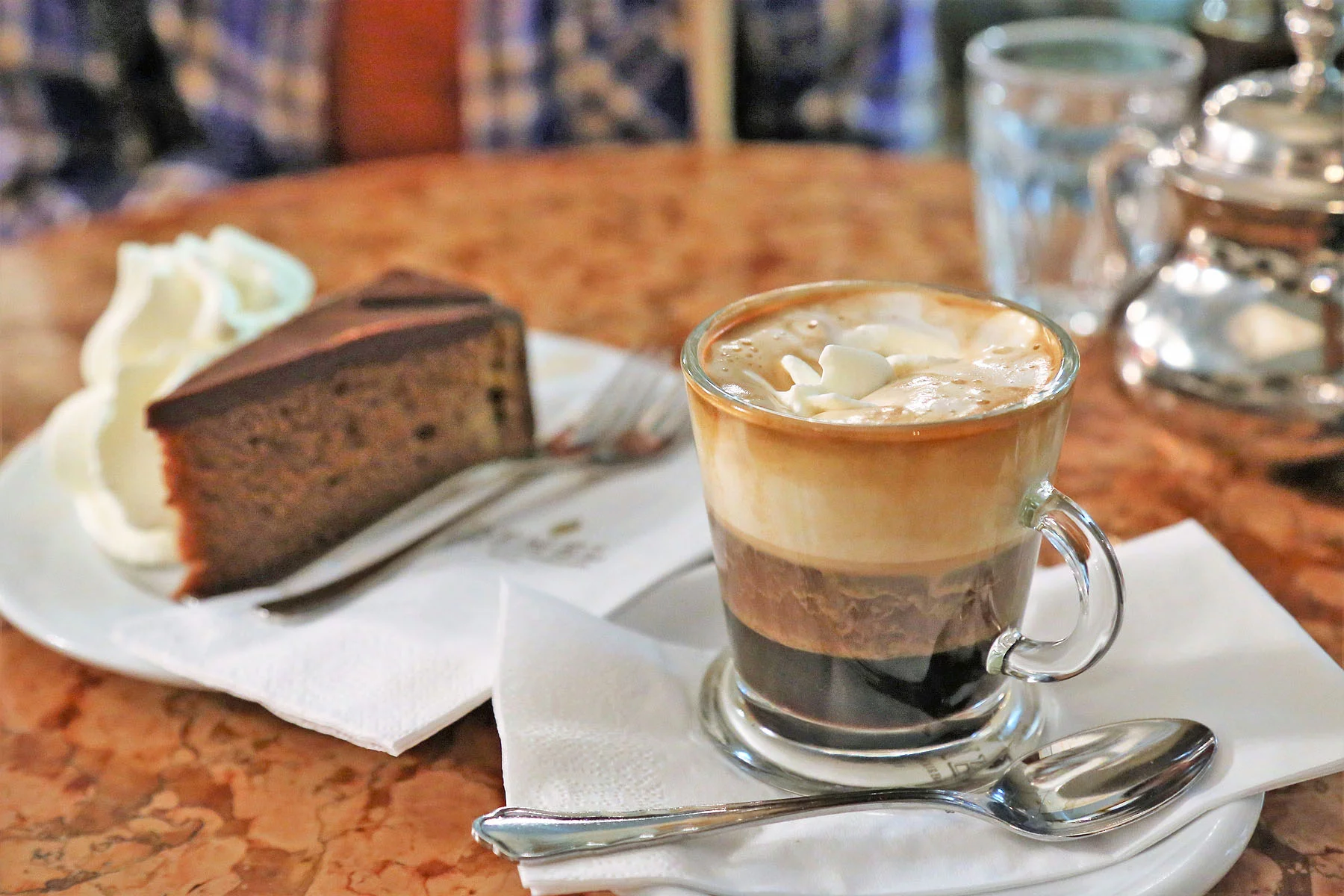
A surprising fact about Austria is that despite 92% of Austrians claiming they drink coffee on a daily basis, a whopping 88% of coffee is actually drunk at home. So while visiting the country’s beautiful coffee houses is always an enjoyable experience, you might want to invest in a decent coffee machine for your home and invite your friends over.
Tea
Although tea is not as widely enjoyed as coffee in Austria, it still holds a special place in the country’s heart. A century after coffee stole the nation’s heart, tea began making a name for itself among the Austrian aristocracy. The upper class in Lower Austria began drinking it regularly for breakfast and in Vienna, Sundays were reserved for exclusive tea parties. This then filtered down to the general public, and before long, practically everyone in Austria was drinking substantial amounts of tea on a daily basis.

Interestingly, since the 1990s, Austria has experienced a growing trend for drinking tea as new varieties and specialties have entered the market. These include everything from sweet Rooibos from South Africa to earthy Pu Erh from China and even refreshing Matcha from Japan.
Nowadays, a third of Austrians enjoy a cup of tea per day; this amounts to a total of 3,000 tons per year. And while this is far less than other European countries such as the UK, Germany, and France, the demand for tea is certainly on the rise in Austria. In fact, the country’s tea market is forecast to grow annually by 8.6% between 2021 and 2025.
This growing demand is largely due to the rising health and wellness trend. This has seen consumers stocking their shelves with organic and exotic flavors. When it comes to tea varieties, Austrians generally tend to prefer herbal and fruit infusions, followed by black and green tea. As a result of this, you will mainly find these brews in Vienna’s many unique teahouses. Of course, tea is also used to create a variety of, not so healthy, specialty drinks such as the famous Jägertee; a strong black tea with rum. You can read more about this further down the guide.
Hot chocolate
Austria has a long-standing love affair with chocolate, which can be seen in the many handmade chocolate shops throughout the country; in particular, Vienna. It is hardly surprising then, that hot chocolate is a beloved winter warmer in this sweet-toothed nation. This heart-warming drink can be found at many coffeehouses in the capital, and many Austrians would say these are the only places where you can enjoy an authentic cup.

Similar to coffee, there are several varieties of the popular Austrian drink on offer; most of which use a real bar of locally made chocolate to create a rich and creamy flavor. Some cafés even allow you to choose what kind of chocolate you would like to melt in your cup of hot foamy milk and whisk it up yourself. Similarly, you can often choose whether to top it off with whipped cream, grated chocolate sprinkles, cocoa powder; or even a cinnamon stick to stir it with.
So whether you prefer sweet milk chocolate or a bitter variety, a sprinkling of cinnamon or vanilla, or even a dash of orange liquor or Amaretto for an extra kick, you will certainly find it in this chocolate-loving country.
Soft drinks in Austria
Like any nationality in the world, Austrians have their favorites when it comes to refreshing soft drinks. Of course, globally known brands such as Coca-Cola and Pepsi are readily available in the country. However, Austria produces several of its own soft drinks which many people enjoy.
Almdudler
One of Austria’s most popular soft drinks is Almdudler, a carbonated soda drink made with elderberry extract. You can drink this refreshing beverage sweetened, light, uncarbonated, or mixed with soda water to create a spritz. You can also mix it with Austrian beer to make an Almradler, or wine to make a spritz, both of which are perfect for the summertime.

Fruit juice
Several popular brands of fruit juice are made in Austria. One of the most common of these is Lattella, which contains whey – also known as milk serum – and therefore has all the essential nutrients of milk; including valuable vitamins, proteins, and minerals. It is almost fat-free and marketed as meeting all the requirements of a “modern and conscious diet”. This popular drink is available in several different flavors – including natural – and is designed to be enjoyed any time of the day. Adults can also use it for mixing cocktails such as Mulled Lattella during the festive season.
Other Austrian-made fruit drinks include Frucade; an orange-flavored lemonade, Pago; which comes in 39 different flavors, and Kracherl; a lemon or raspberry-flavored soda. Several variations of each drink are also available, and these often include low-calorie, sports, and vitamin editions. Needless to say, you will most likely come across these popular soft drink brands when browsing the aisles of your nearest Austrian supermarket.
Energy drinks
Austria is home to several energy drink brands, the most famous of which is Red Bull. The company’s headquarters is located in the town of Fuschl, about 90 minutes south of Linz. The brand produces several editions of the energy drink, as well as Red Bull Simply Cola; which, as the name suggests, is made from Red Bull and cola.

Other popular Austrian energy drink brands include Blue Ox, Dark Dog, and Power Horse. If you need a quick boost while you’re on the go in Austria, you certainly won’t have any trouble finding it.
Alcohol in Austria
Like many nationalities, Austrians love to indulge in an alcoholic beverage or two. In fact, data released in 2018 by the Organization for Economic Co-operation and Development (OECD) suggests that they might enjoy this a little too much. According to the figures, Austrians drink 12.5 liters of alcohol per person every year, which is 1.1 liters more than the EU average. Furthermore, the country is the second-largest consumer per capita of alcohol in the entire OECD; behind only Latvia, which consumes 12.6 liters per person every year.
Alcohol laws in Austria
Unlike in some European countries, in Austria, purchasing alcohol is regulated at a regional level. Essentially, there are two different age requirements – either 16 or 18 years – and these depend on the region and the percentage of alcohol content.
In Upper Austria, Salzburg, and Tyrol, for instance, under-18s are prohibited from consuming distilled beverages. Meanwhile, in Carinthia and Styria, under-18s are prohibited from drinks containing more than 12% or 14% of alcohol, respectively. Carinthia also requires adolescents to maintain a blood alcohol level below 0.05%. Upper Austria, on the other hand, merely prohibits excessive consumption, while Salzburg prohibits consumption that would result in a state of intoxication.
Interestingly, in Vienna, Burgenland, Lower Austria, and Vorarlberg, prohibitions only apply to alcohol consumption in public. Indeed, while it is broadly legal to drink in public places, it is forbidden in train stations and on public transport. In fact, other than outdoor terraces and beach bars, drinking in public is generally frowned upon; public drunkenness and anti-social behavior can also incur hefty fines and even a criminal record.
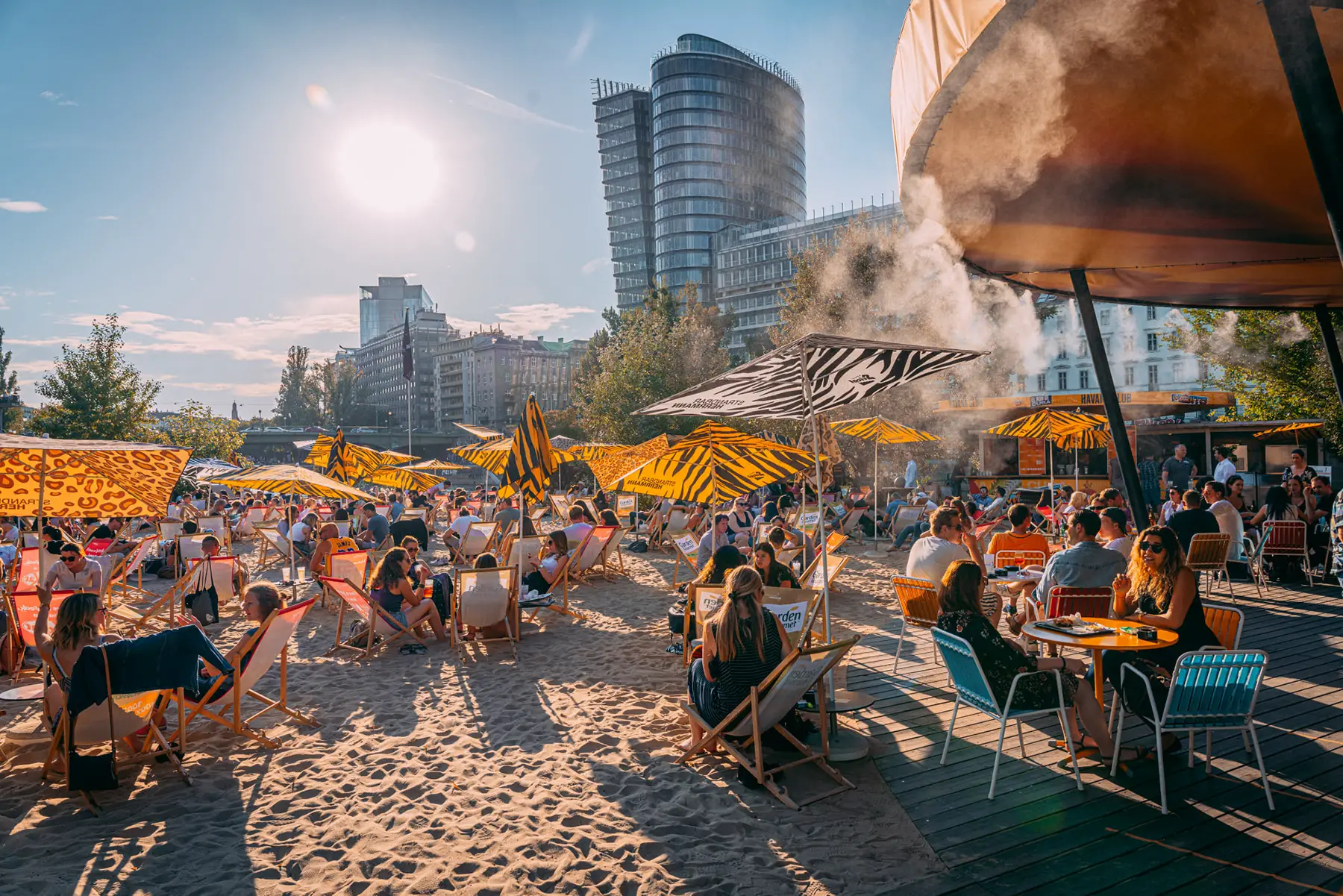
Of course, if you are an expat considering moving to Austria, you are likely already above the legal drinking age. That said, it is still important to bear in mind that drinking laws do vary from region to region.
Drinking hours in Austria
By law, most eating establishments in Austria may open as early as 06:00 and stay open until as late as 02:00. Meanwhile, most drinking establishments may open from 10:00 and close as late as 04:00. Wine taverns, on the other hand, must close by midnight. Discos and clubs, meanwhile, can stay open until 06:00.
Where to drink alcohol in Austria
Similar to other European nationalities, Austrians tend to drink at bars, restaurants, pubs, and clubs. However, one drinking tradition that is fairly unique to Austria is the Schanigarten, which are courtyard gardens and pavement terraces. These usually begin popping up throughout the cities during the summertime, attracting clusters of locals and tourists alike.
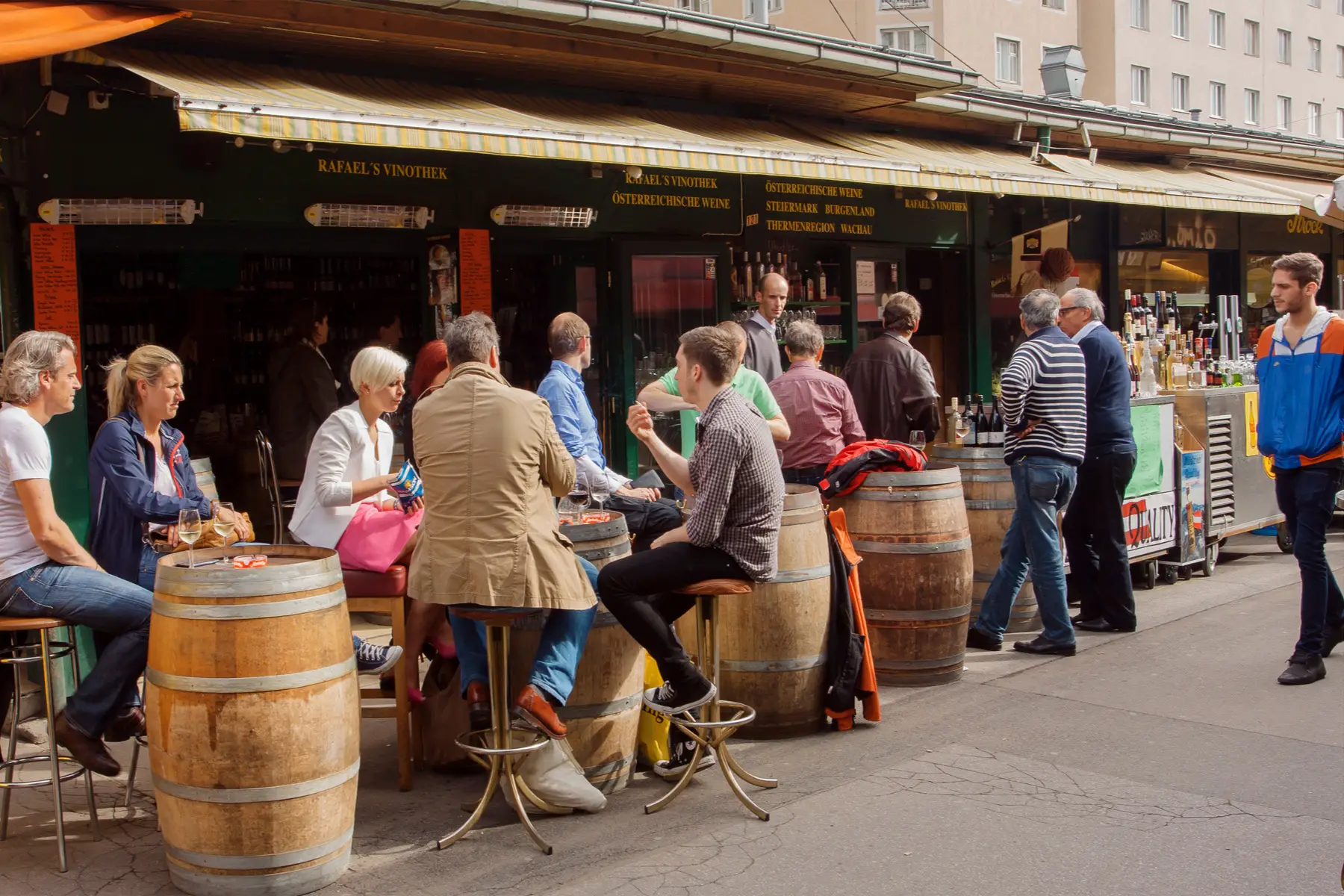
In Vienna alone, there are around 3,500 Schanigärten, some of which are near the famous Naschmarkt. Unsurprisingly, these spots make for fantastic people-watching.
Vineyards and breweries also make for popular drinking locations and there are numerous tours and tastings that you can join to experience the best of Austrian beer and wine.
There are also several popular drink festivals throughout the country that are dedicated to specific tipples. Beer lovers, for instance, might be keen to check out the Wiener Bierfest, Ottakringer Bierfest, Altausseer Kiritåg-Bierzelt, or Craft Bier Fest. Wine enthusiasts, on the other hand, might want to visit Weinfest Kufstein, or Vievinum Hofburg.
Popular alcoholic drinks in Austria
Generally speaking, beer and wine are the most popular alcoholic drinks in Austria. That said, each region has its own preference. Lower Austria, for instance, is home to the country’s biggest wine territory and produces a variety of different wines. Upper Austria, meanwhile, is internationally renowned for its excellent beers, which is generally the drink of choice among the locals. Aside from wine and beer, Austria is also home to some other tantalizing alcoholic drinks, which we are about to explore.
Austrian beer
Austria has been producing beer since the 14th century and currently boasts the highest density of breweries in Europe. Amazingly, there are 298 active breweries dotted throughout the country, ranging from small breweries that use centuries-old techniques to trendy new craft breweries creating all kinds of unique brews.
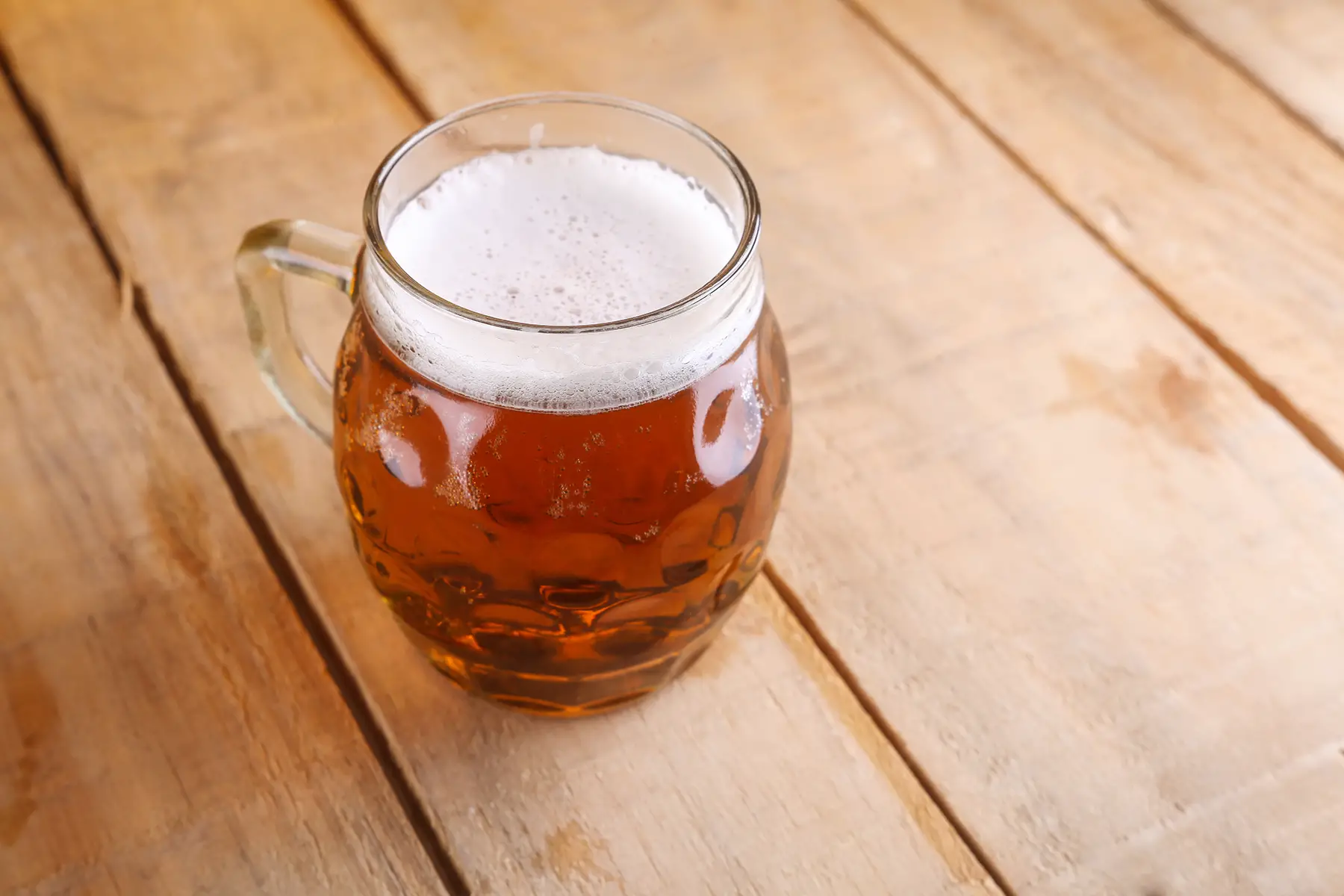
Some of the country’s most popular brands, including Stiegl, Gösser, Zipfer, and Ottakringer, are produced in these breweries. And luckily for beer lovers, many of them are open to the public for tours and tastings.
To give you an idea of the scale of Austrian beer production, here is an overview of the different regions and the beers they produce:
- Styria – Gösser, Puntigamer, and Murauer
- Carinthia – Hirter
- Lower Austria – Egger, Schwechater, Zwettler, and Wieselburger
- Upper Austria – Kaiser, Zipfer, and Kapsreiter
- Vienna – Ottakringer
- Salzburg – Stiegl, Augustiner Bräu, and Edelweiss
- Tyrol and Vorarlberg – Falkenstein, Frastanzer, Mohrenbräu, Starkenberger, Zillertaler, Fohrenburger, and Der Wilde
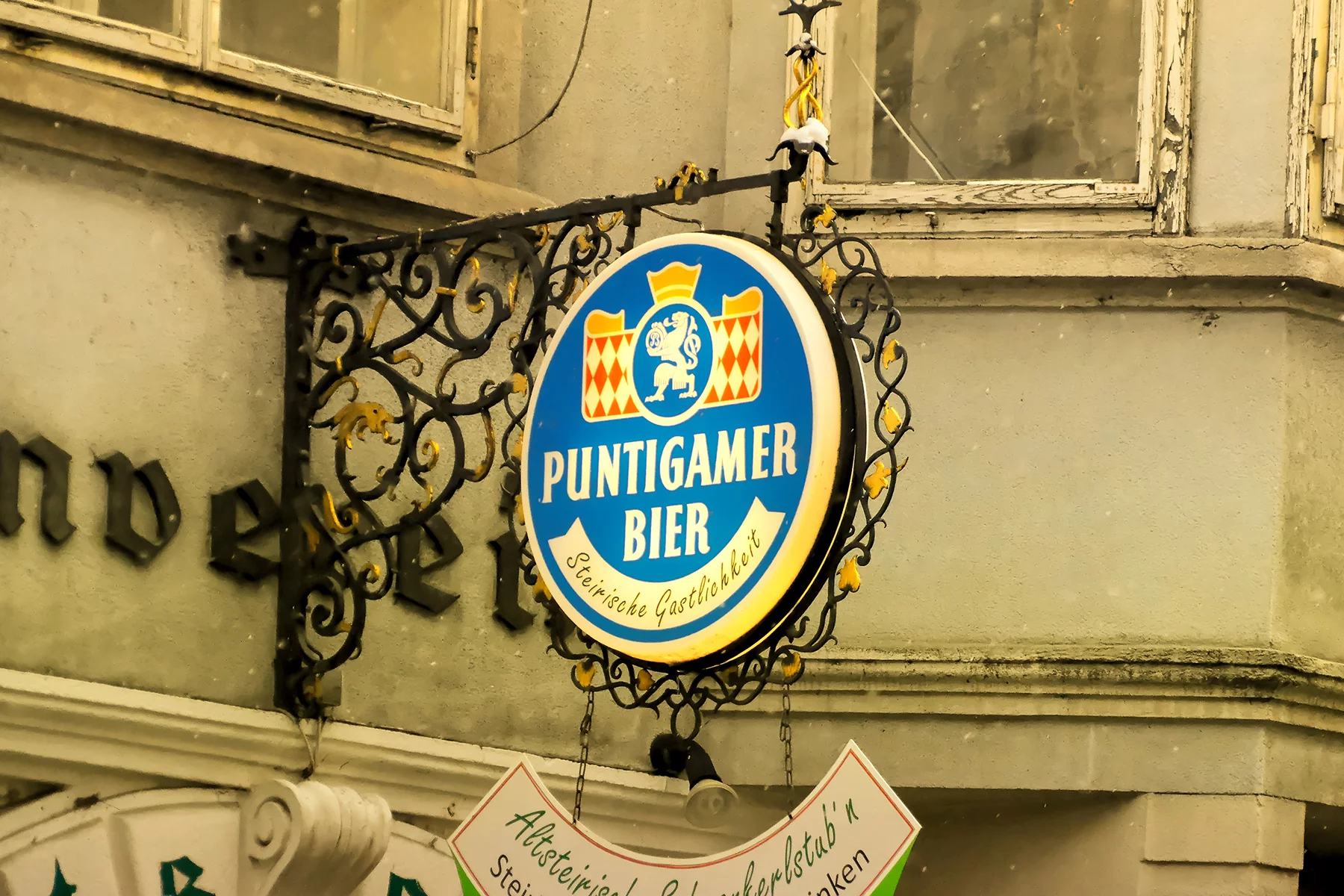
As of 2020, Austria was the country with the second highest beer consumption per capita in the world, at 96.8 liters. Surprisingly, it ranked above Germany by 6 liters per capita. Needless to say, if you are passionate about beer, you will certainly be in the right place in Austria.
Austrian wine
Austria’s diverse climate and fertile soils create the perfect conditions for producing some of the finest wines in the world. In fact, the alpine country has been making wine since 700 BC. Although its vineyards produce both white and red wine, they are more famous for their dry white wines. These are mostly made from the Grüner Veltliner grape which currently covers 37% of Austria’s vineyards.
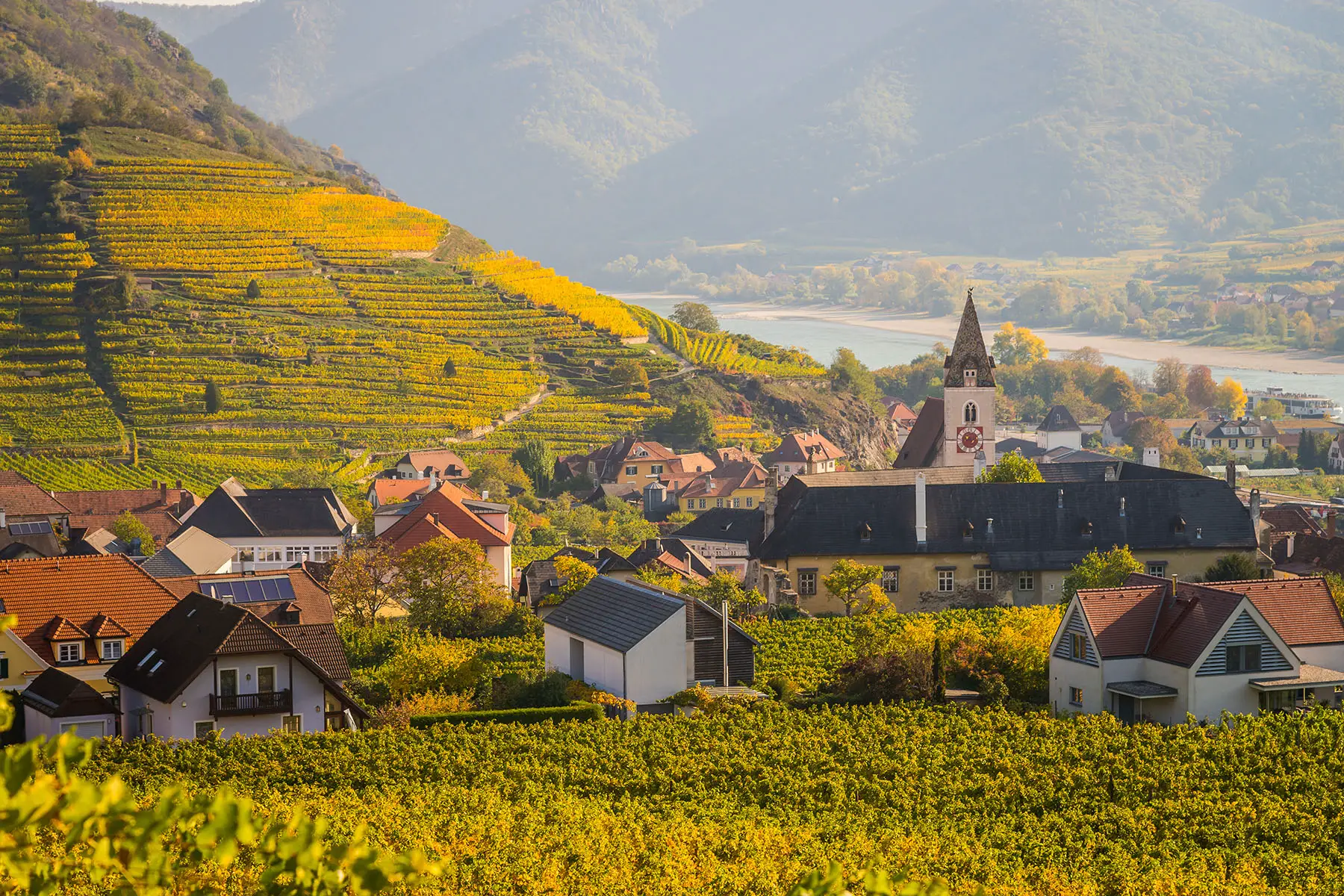
That said, the country also produces some sweeter varieties, such as dessert wine, as well as international grapes like Riesling. Both of these grapes, along with Zierfandler and Rotgipfler varieties, can be found in the vineyards of the Wachau Valley in Lower Austria. Set against the stunning backdrop of the Danube River, this UNESCO-listed site is the country’s largest wine-growing region and home to 60% of its vineyards. It is home to more than one hundred wine producers, many of which offer public tours and tastings; making this an absolute must-visit for wine lovers.
Essentially, there are four main wine-growing regions in Austria that produce a variety of red and white wines. Here is an overview of the different regions and the wines they produce:
- Lower Austria – Grüner Veltliner, Rieslings, and varieties like Zierfandler and Rotgipfler
- Burgenland – full-bodied red wines such as Zweigelt, Blaufraenkisch, and St. Laurent, plus dessert wines like Eiswein or Trockenbeerenauslese
- Styria – Sauvignon Blanc, Gelber Muskateller, Welschriesling, and Weissburgunder
- Vienna – Riesling and other white wine varieties
And, if you want to feel like a real local when ordering your next glass of wine at the bar, here are some handy German terms for white varieties:
- Pinot gris – Ruländer or Grauburgunder
- Pinot blanc – Weißburgunder or Weissburgunder
- Sauvignon blanc – Muskat Sylvaner
Kaiserspritzer
If you’re looking to drink something light and refreshing, you could also ask for a Kaiserspritzer; the Austrian version of a white wine spritzer. You can make this by mixing white wine with sparkling water or soda water. If you like, you can also add a splash of elderberry syrup or fruit cordial for extra sweetness and flavor. This is a particularly popular drink during the summertime in Austria, especially when served with ice for an extra cooling effect.
Hugo Cocktail
Essentially, the Hugo Cocktail is a variation of the Kaiserspritzer, but less sweet in flavor, which also makes for the perfect summertime drink. This somewhat trendy cocktail originally began its journey in northern Italy in 2005; there it was enjoyed as a typical aperitivo drink. However, it quickly became popular in Germany and neighboring Austria. The light and refreshing drink is made by mixing prosecco with elderflower syrup and then adding a few mint leaves and some ice.
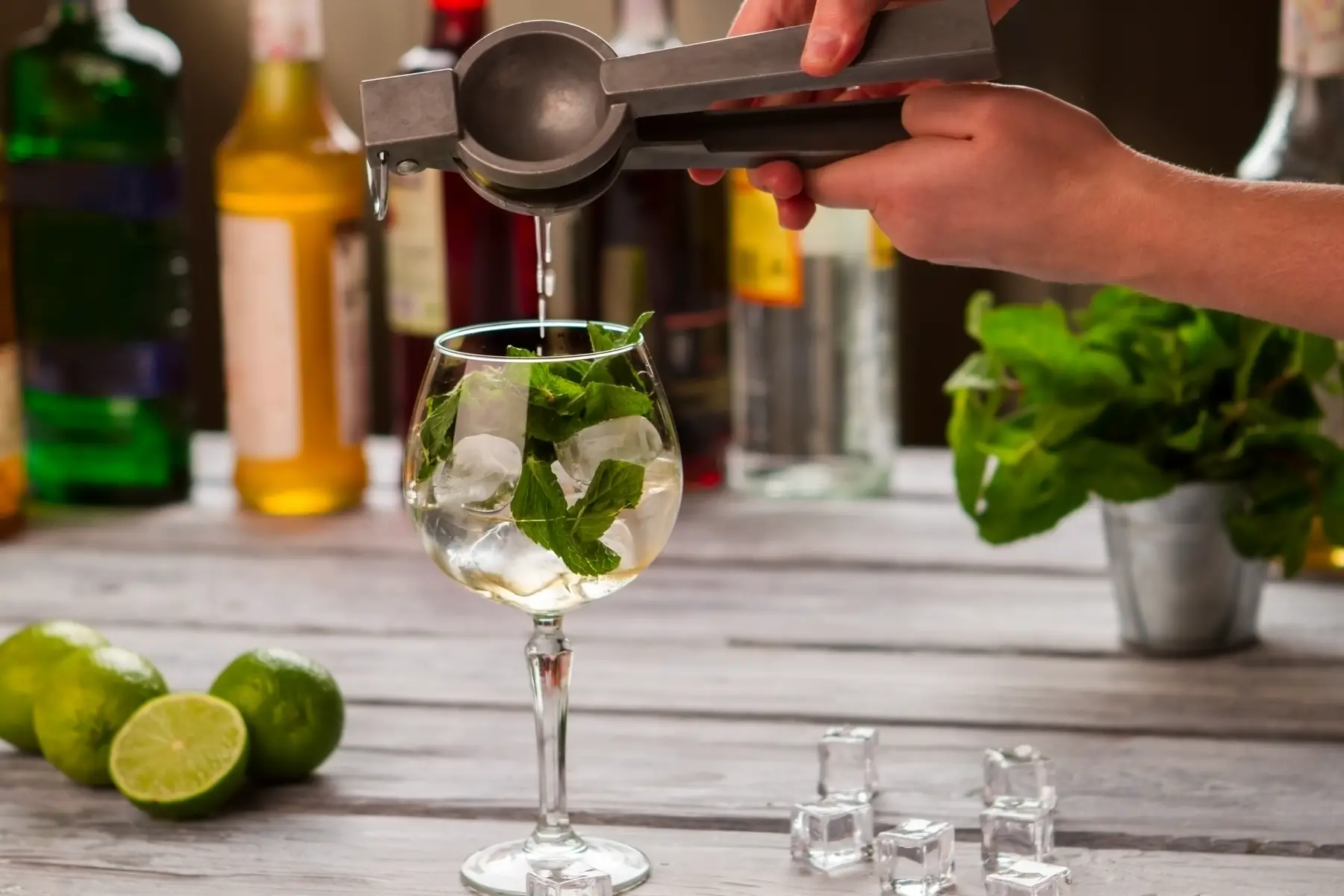
Like most cocktail recipes, the ingredients sometimes vary depending on where you drink it; as well as your own personal preference. Some people, for instance, like to add a few slices of lime to create a zesty flavor to balance out the sweetness of the elderflower syrup. Others, meanwhile, prefer to dilute it with a dash of sparkling water to create a Hugo Spritz Cocktail. However you drink it, though, it is certainly a delicious way to cool yourself down during the warmer months in Austria.
Schnaps
Aside from beer and wine, Schnaps is somewhat of a national treasure in Austria and a must-try when visiting or living in the country. These distilled spirits are normally made from a variety of fruits such as apricots, pears, or cherries. Austrians have been sipping on Schnaps for centuries, and usually as a digestif after a meal. Despite its high alcohol content, which is usually above 30%, the popular drink is surprisingly smooth and easy to drink. That said, you might still want to take it easy!
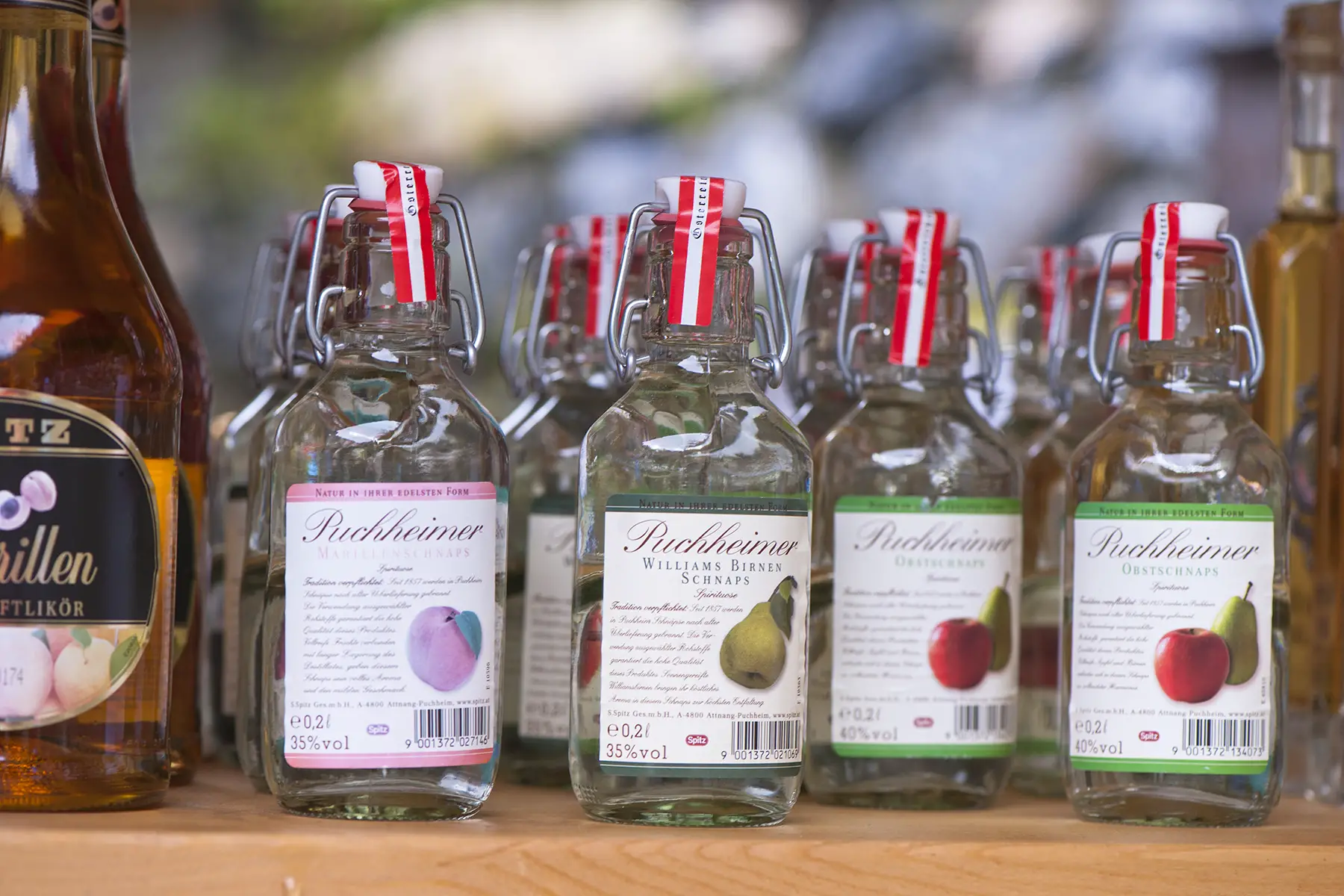
Seasonal drinks in Austria
Aside from beer, wine, and Schnaps, Austria is home to some spectacular hot alcoholic drinks that are particularly good at warming the spirits and adding a rosy glow to the cheeks come wintertime. Often made from various liqueurs and teas, these recipes are unique to the country and are traditionally enjoyed during the festive season and in mountain taverns.
Glühwein
Glühwein is perhaps the most famous seasonal drink in Austria. In fact, many European countries enjoy sipping on this spicy hot beverage when the temperature plummets and the festive lights go up. Indeed, you will almost always come across several Glühwein stalls at Europe’s many Christmas markets. Ski resorts and alpine taverns also serve this popular Austrian drink to warm up customers after a long day on the slopes.

Glühwein, or mulled wine, is essentially a heavy red wine that is cooked with herbs, spices, fruit, sugar, and sometimes other liqueurs. There are several variations of the recipe which can make it taste sweeter or spicier. Either way, the trick is to not let the wine boil, but to keep it just hot enough to warm you up without burning off the alcohol!
Jägertee
Come ski season and Christmas time, Austrians also enjoy sipping on Jägertee. At first glimpse, this delightful winter drink may look like Glühwein. However, there are actually different ingredients involved in making it. Jägertee is essentially black tea mixed with popular STROH Inländer Rum and festive condiments like cinnamon and cloves.
Depending on their alcohol tolerance level, some people also like to add other ingredients such as fruit Schnaps into the mix. Be warned, though, even in its traditional form, Jägertee is much stronger than you think!
Useful resources
- European Coffee Trip – a city guide with a map of 39 coffeehouses in Vienna
- Travelsewhere – an article on 7 Things to Know About Drinking Coffee in Vienna
- RateBeer – provides a directory of Austrian brewers with beer counts and ratings
- Taste of Austria – an article on What is it that makes Austrian wines so special?
- Austria.info – offers information about Austria’s wine scene including the best wines to try and the best wine tours to take
